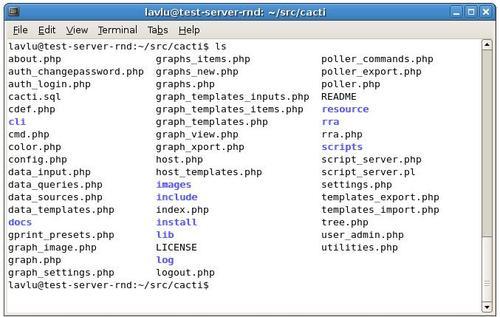In this chapter, we are going to learn some advanced topics like:
Cacti's directory structure.
Cacti's backup procedure.
Cacti's restore procedure.
Cacti's CLI features.
Although Cacti is primarily a web-based PHP application, there are several command line interface scripts that allow for command line control of various aspects of Cacti. At the end of this chapter, we will cover some of these utilities.
Cacti's directory structure looks like the following:

Cacti contains the following sub-directories within its main directory—unless you are fully aware of the implications of editing these files, it is best to avoid doing so.



